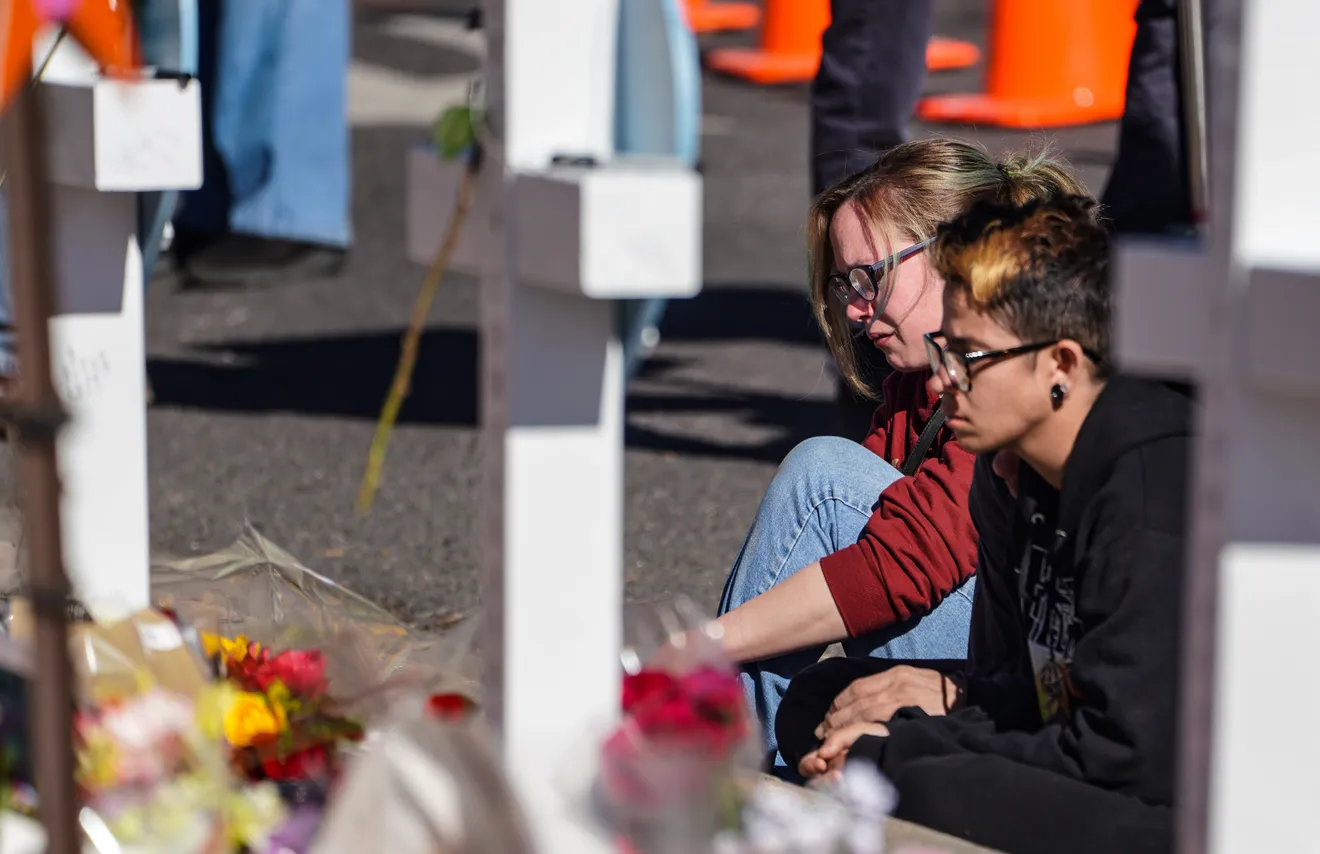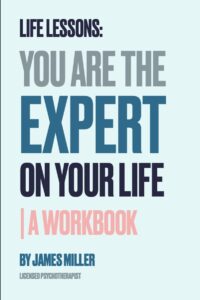James was interviewed by Trevor Hughes and Terry Collins of USA TODAY about the shootings in Colorado Springs, CO.
Read the Full article.
COLORADO SPRINGS, Colo. – Chesapeake. Colorado Springs. Uvalde. Buffalo. Portland. Highland Park.
Mass shootings in big cities and small towns across the country have risen in the wake of the 2020 pandemic lockdowns. And amid the grief and shock and loss, each one prompts more businesses, schools, hotels or nightclubs to toughen their own security responses.
And that, experts say, contributes to a simmering anxiety for potentially millions of Americans. While death in a mass shooting remains rare, public reminders of them are omnipresent. News about them is frequent. And the next one appears impossible to predict.
A Walmart manager opened fire Tuesday night in a Chesapeake, Virginia, store where he worked, killing six and wounding at least five others before killing himself, authorities said.
Days before, a shooter killed five people at an LQBQT bar in Colorado Springs, Colorado, before being tackled by a former U.S. Army major and other patrons.
In between those two attacks, six other people were killed and 14 others wounded in shootings in Oklahoma, Mississippi, Texas and Illinois, according to the nonprofit Gun Violence Archive, which catalogs shootings of four or more people, excluding the shooter.
For the victims and survivors, each attack is intensely personal. And for the rest of us, each new attack chips away at our sense of safety and community.
For some, the daily reminders become impossible to ignore.
“It’s horrible we all have to live with this fear in the back of our minds constantly,” said Haylea Turner, 24, a longtime patron of Club Q, the site of last week’s shooting in Colorado Springs.
Turner was not at the club that night. She said that’s in part because she’s grown cautious about going places where other shootings have occurred, from movie theaters to college classrooms.
“Due to the senseless nature of gun violence in America that is only horrifically worsening, I have lived a more sheltered life out of sheer fear,” she said.
Rising numbers, lasting effect
Recent years have set new records for the total number of mass shootings in the U.S., according to data from the Gun Violence Archive. Last year, with 690 total incidents, was the highest number since the project began tracking shootings in 2014.
For this year, that number stood at 608 as of Wednesday.
A separate joint effort by the Associated Press and USA TODAY that tracks mass killings, in which four or more people are killed, shows a similar trajectory.
Get the Everyone’s Talking newsletter in your inbox.
Get caught up with the trending news you need to know
Delivery: Mon – FriYour Email
Mass killing database: Revealing trends, details and anguish of every US event since 2006
At the same time, more guns are being sold than ever before: Annual gun sales peaked during the coronavirus pandemic, with more than 21.5 million sold in 2020. Another 19 million were sold last year – the second-highest ever recorded – amidst a shift in gun marketing from hunting to self-defense.
In addition to the firearms, manufacturers are heavily marketing things like concealed-weapons holsters in yoga pants and secret gun safes built into SUV headrests, so buyers can be prepared to confront an active shooter no matter the circumstances.
In Uvalde, Texas, officials are planning to bulldoze the elementary school where 22 students and teachers died on May 24, with plans to build a state-of-the-art campus with enhanced security measures. Reports indicate poor security at the school contributed to the death toll – security that has been tightening at schools since the 1999 Columbine High School massacre.
In Boulder, many grocery stores are now protected by armed police officers or private security guards, a legacy of the March 22, 2021, shooting in which a gunman killed 10 people at a King Soopers supermarket.
The Club Q shooting prompted San Francisco bar owner Chris Hastings to schedule new trainings in “active shooter” response for his staff at the Lookout bar, a popular spot in the Castro District, one of the nation’s most best-known LGBTQ neighborhoods.
Hastings said his staff underwent the training following the 2016 Pulse nightclub mass shooting that killed 46 people in Orlando, and it includes turning down club lights and music to reduce confusion should an attack occur. Staff also have memorized paths to the exits so they can help patrons escape, he said.
“I’m angry that things like this keep happening, I’m anxious for the staff and the patrons who come in,” Hastings said. “I’m frustrated that we need to take precautions to have more training so people can have a good time.”
Explaining the trauma response
Experts told USA TODAY that while the likelihood of falling victim to a mass shooting is incredibly small, the fact they happen in such unpredictable locations triggers an ongoing trauma response for many people.
Even when it’s not your grocery store, your school, your movie theater, the reminders feel inescapable.
“It’s only human to ask ourselves questions like, ‘Is it safe for me to go to the grocery store? Is it safe for me to drop my kids off at school? Is it safe for me to go out to dinner? Am I safe being in public?’” said Stephanie Robilio, a clinical director for Agape Behavioral Health Care in Fort Lauderdale.
She added: “You can see if you or another person are having thoughts like these, imagine what this does to our collective mental health?”
Steven Adelman, an attorney and vice president of the Connecticut-based Event Safety Alliance, said mass shootings create tension in our minds because we know they’re rare, but we simultaneously fear the unknown. Adelman has served as an expert witness in personal injury lawsuits following mass shootings, including the Las Vegas Route 91 Harvest music festival.
In that attack, a man who hauled an armory of guns and bullets to the 32nd floor of theMandalay Bay casino hotel opened fire on the people below, killing 60 and wounding more than 400 in the worst mass shooting in modern U.S. history.
Following that attack, many Las Vegas hotels started routinely inspecting every occupied room, including those with “do not disturb” signs.
Adelman said the pandemic was a good example of how most people respond to a traumatic experience: While a relatively small number of people are still avoiding large gatherings or poorly ventilated indoor spaces, the fact Club Q was open and busy demonstrates most people resume their normal behavior relatively quickly.
“It’s important not to be a fearmonger,” Adelman said. “We are creatures of habit. When there is an interruption in the usual way of doing things, it causes people to vary their responses for a while, but after that while passes, many people will resume their activity they enjoyed before.”
In Uvalde, Nancy Sutton and her husband installed security cameras and started more consistently carrying concealed firearms, a legacy of the shooting in one of the many schools where they routinely work as class photographers. She said tension at the nearby U.S.-Mexico border already had them on edge, but the attack on Robb Elementary has shaken their faith in the safety of their small town, where they knew every child and teacher killed.
“The shooting has made us more cautious and aware of our surroundings,” said Sutton, 59. Still, it hasn’t stopped them from attending school-related events or other large gatherings.
Many people on the periphery of a shooting suffer what’s known as “secondary trauma,” said James Miller, a licensed psychotherapist and nationally syndicated radio talk show host.
“This happens when there’s an event where we see or hear something that can cause us to have a level of trauma, PTSD, or compassion fatigue,” Miller said. “We may experience the same types of symptoms as those who were there, as we can fill in the blanks to the terror or pain the victims must’ve felt.
“Maybe not to the same extent, but pretty similar symptoms.”
Living with fear
While experts said time can help soften the immediate impacts, that’s not always an option for emergency responders or even grocery store workers, who are increasingly finding themselves at risk. In addition to the 2021 Boulder King Soopers shooting, grocery workers were targeted in last May’s shooting at the Buffalo Tops store and Tuesday night’s Walmart attack in Chesapeake.
After the 2021 Boulder attack, union workers collectively bargained to get company-provided mass-shooter safety training, and are learning new de-escalation techniques to deal with angry customers, said Kim Cordova, the president of Colorado’s Local 7 of the United Food and Commercial Workers International Union.
Cordova said a customer wearing camouflage shorts, a face mask and tactical-style gloves recently came into a Colorado store with an AR-15-style rifle slung across his back, frightening customers and workers. Although the man wasn’t confronted for violating store policy and left without incident, it rattled the staff, Cordova said.
“You’re just waiting for the next bad thing to happen,” she said. “It’s just scary that we do have to live in fear.”
For former Orlando police officer Omar Delgado, hearing about the Colorado Springs shooting brought back memories of being one of the first officers to arrive at Orlando’s Pulse nightclub in 2016. Delgado was hailed as a hero, but ultimately had to retire because of the PTSD he developed.
Six years on, Delgado said he’s doing much better as his recovery is “still a long process.” He said he hopes that those who lost loved ones in the most recent mass shootings find comfort and support from each other.
“When you read, hear and see about stuff like Colorado Springs, it sets you back a bit, like wanting to crawl back into a hole,” Delgado said. “But retreating can hurt you even more.”
And he worries about escalation – where one shooter is inspired by media coverage of others: “Someone could be probably saying to themselves … Can I take out more people?”
Back in Colorado Springs, nightclub patron Turner said the shock of the Club Q shooting is wearing off. And when the club reopens, she hopes to go back to help reclaim what had been a safe space for the LBGQT community in a conservative city.
“It sort of feels like you’ve lost your emotional home,” she said. “I knew I could always find a sense of community and unfailing support at Club Q, and that’s gone now. I do know that I have a responsibility to be the embodiment of resilience and continue to gather with love in safe, open, spaces. Hiding in fear would only let hate and hateful rhetoric win and I refuse to live life in any capacity but by exemplifying unfailing love. I tell myself it is now more than ever that I need to love with urgency.”
Originally published at 11 pm, ET 11/23/2022






 We all get overwhelmed and sometimes don’t know what to do. LIFE LESSONS is your new “go-to” book to help you navigate life.
We all get overwhelmed and sometimes don’t know what to do. LIFE LESSONS is your new “go-to” book to help you navigate life.